Hubble’s Greatest Discoveries Weren’t Planned; They Were Surprises

‘Luck’ is the wrong word. The Universe cooperated, but we gave ourselves the opportunity by being prepared.
It was already 28 years ago that the Hubble Space Telescope was launched and deployed in low-Earth orbit, where it remains today. Outfitted with a 2.4 meter mirror, a slew of instruments designed for viewing stars, planets, nebulae and galaxies, Hubble became humanity’s first civilization-class space telescope. Although it had a number of science goals, its most ambitious was what gave rise to its name: it was the Hubble telescope because it was built to measure the Hubble expansion rate of the Universe. But what Hubble wound up teaching us went far beyond anything it was designed for, and that was due to a combination of three factors. First, Hubble was overbuilt for its mission. Second, Hubble was repaired, upgraded, and serviced. And third, the people administering Hubble had the foresight to green-light some very bold, ambitious proposals. Here’s what we’ve learned.
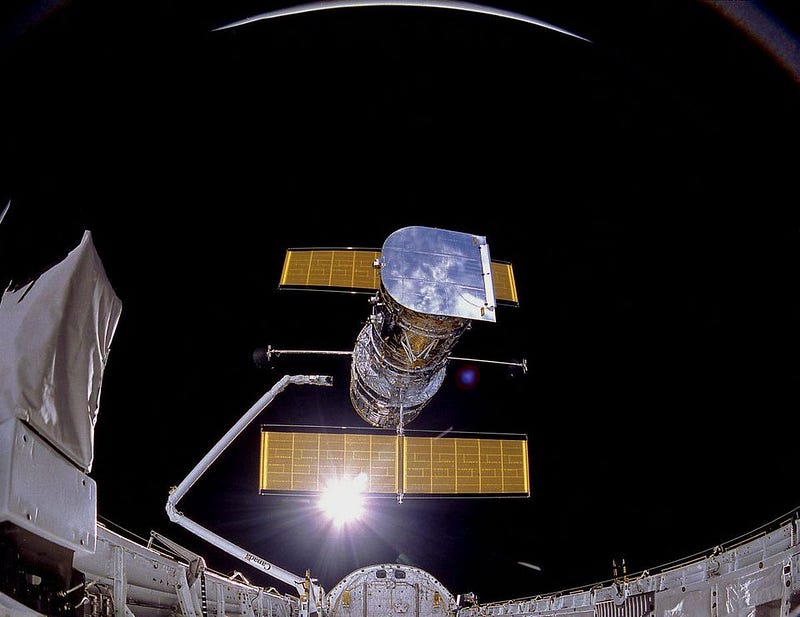
When Hubble was first deployed and set its eyes on the Universe, it was one of the greatest disasters in astronomy’s history. Its initial views of the Universe, rather than being crisp, clear, and unpolluted by atmospheric imperfections, were blurry. The optical instruments had been built incorrectly and incompatibly, and as a result the incoming light was focused improperly, meaning the telescope was quite inferior to what it was designed to be. It was only through corrective procedures and equipment — and the eventual servicing and repair missions — that the problem was fixed. The risky plan, for a space shuttle to rendezvous with the telescope and service/repair it, began to pay untold dividends when the optics were finally corrected, and then the instruments were upgraded.
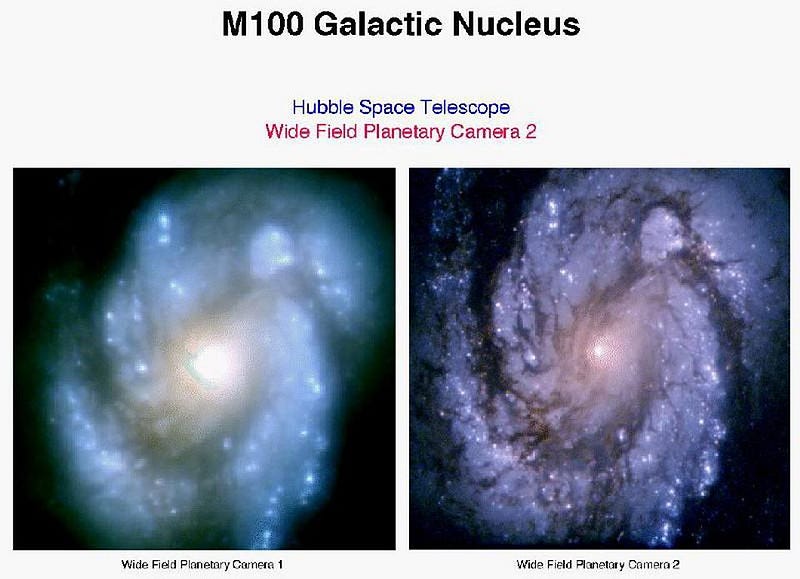
That’s when the fun truly began. Its primary mission was to measure the Hubble constant and determine who was right about the Universe:
- the Allan Sandage camp, who insisted that the Universe was low-density (5–10% matter), expanding slowly (with a Hubble constant of 50–55 km/s/Mpc), and old (~16 billion years old),
- or the Gerard de Vaucouleurs camp, who advocated that it was high-density (100% matter), expanding rapidly (with Hubble’s constant of 90–100 km/s/Mpc), and young (~10 billion years).
By measuring everything from Cepheid variable stars in our own and nearby galaxies to correlated properties of individual galaxies and even the supernovae that occur in them, we were able to eventually determine that both camps were wrong. The Hubble Key Project concluded that the Hubble constant was 72 ± 7 km/s/Mpc. The Universe was not what anyone expected.
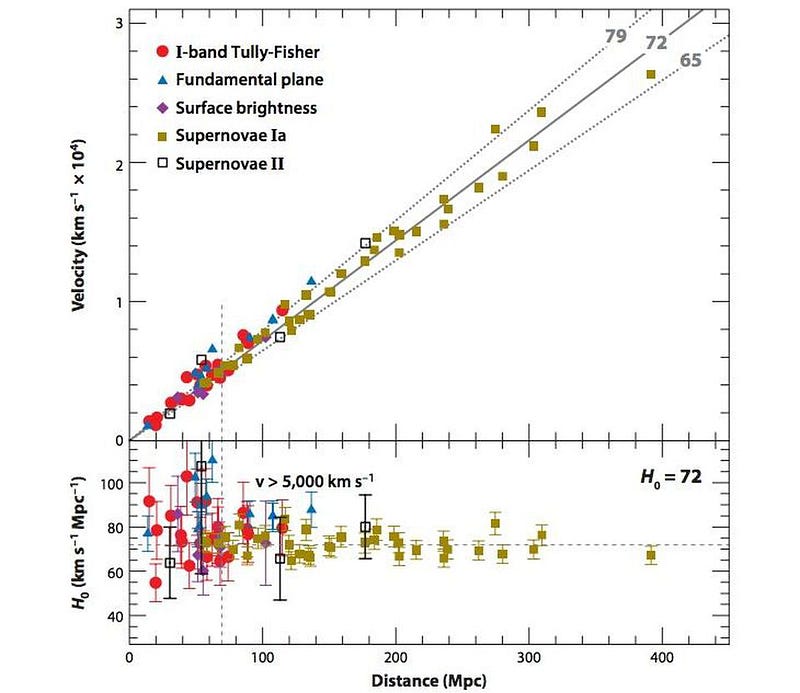
But Hubble did so much more than simply what it was designed to do. Hubble’s greatest discoveries happened because it was an observatory with instruments and capabilities that were new and unique, and therefore there were so many observations it could make, in principle, that had never been made before. Every time we undertook a new venture, there was a chance of seeing something new, unexpected, and potentially revolutionary. Hubble, over the years, has done all of that and more.
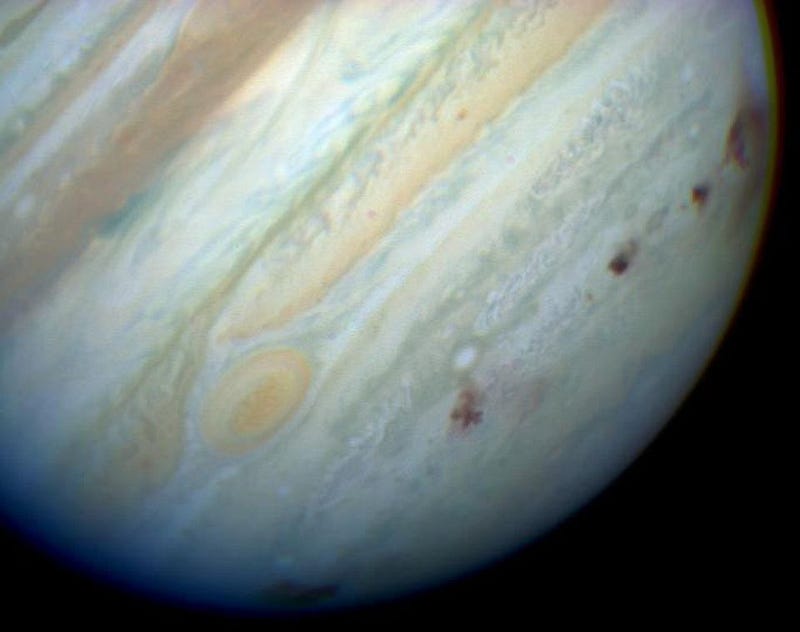
In 1994, Comet Shoemaker-Levy 9 crashed into Jupiter, two years after being fragmented and torn apart by a close gravitational encounter with it. Hubble photographed this as it happened, catching impacts and the aftermath as well. Hubble revolutionized planetary science in a number of ways through its precision observations of our own Solar System, measuring features like volcanoes on Io and aurorae on Uranus all the way from Earth. Perhaps most famously, however, a clever set of images and techniques were used to construct this now-famous image of the Plutonian system.
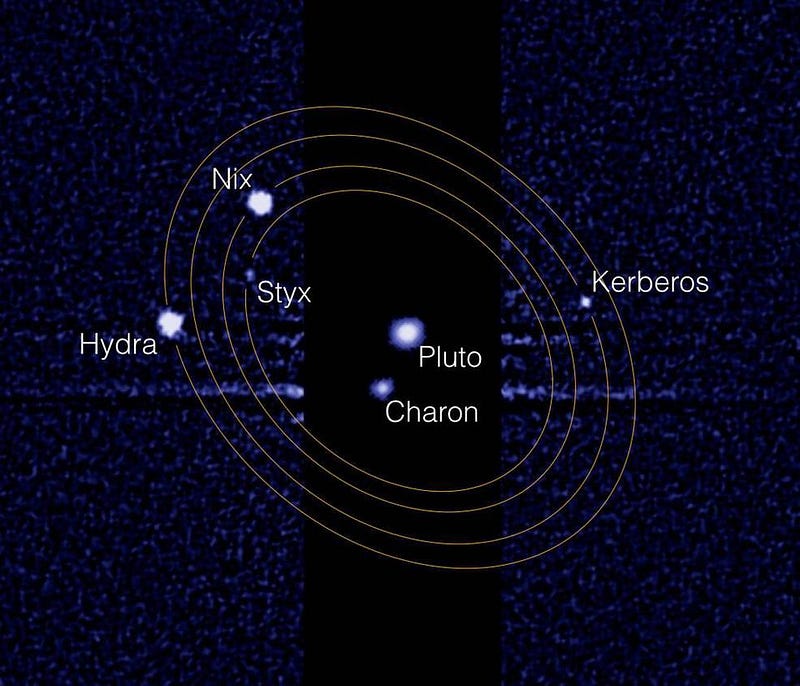
Before Hubble, we knew only of Charon as Pluto’s satellite. This giant moon was discovered back in the late 1970s, and people speculated that if there was one moon, there might be more. Over the course of a few years in the early 2000s, Hubble discovered four additional ones: Styx, Kerberos, Nix and Hydra. Even with the advent of the New Horizons mission, no extra moons were discovered; Hubble, from three billion miles away, had found them all. And those are just some of the highlights of Hubble from within our Solar System.

When Hubble was launched, we didn’t know of the existence of any planets beyond our own Solar System. Hubble not only imaged protoplanetary disks forming in star-forming regions like the Orion Nebula, but became the first telescope to ever take a direct image of a planet in orbit around another star by looking at Fomalhaut and imaging, among its disk, a true planet.
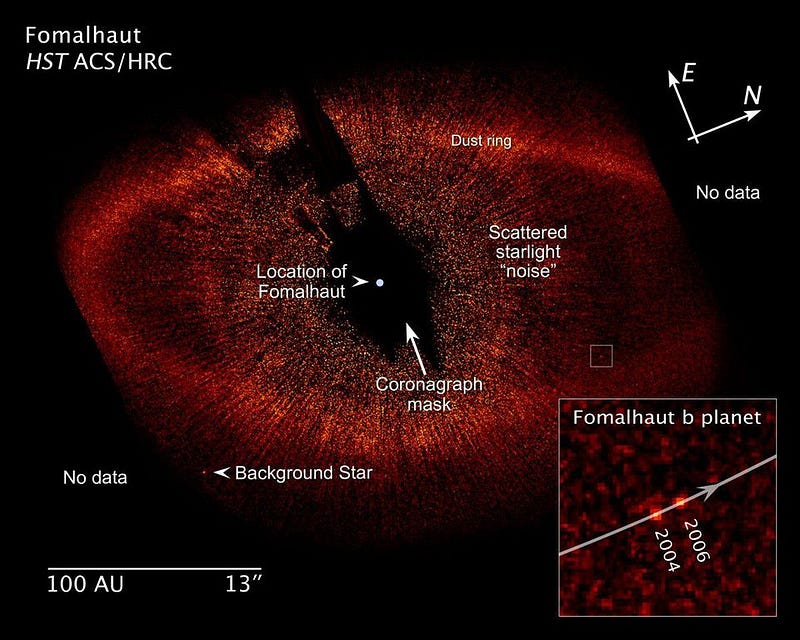
Beyond that, Hubble went even farther, peering deep inside star-forming regions to teach us how and where new star formation was occurring. Quite famously, it peered inside the Eagle Nebula, discovering the pillars of creation, evaporating gas globules, and — by looking inside the nebula with its infrared eyes — determining where the new stars were inside these pillars.
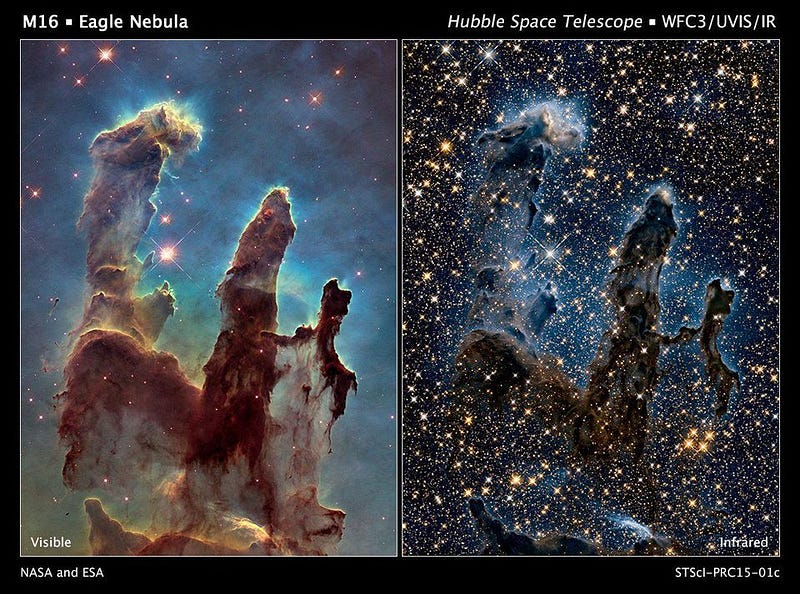
And if we head out beyond our own galaxy, that’s where Hubble truly shines, having taught us more about the Universe than we ever imagined was out there. One of the greatest, most ambitious projects ever undertaken came in the mid-1990s, when astronomers in charge of Hubble redefined staring into the unknown. It was possibly the bravest thing ever done with the Hubble Space Telescope: to find a patch of sky with absolutely nothing in it — no bright stars, no nebulae, and no known galaxies — and observe it. Not just for a few minutes, or an hour, or even for a day. But orbit-after-orbit, for a huge amount of time, staring off into the nothingness of empty space, recording image after image of pure darkness.
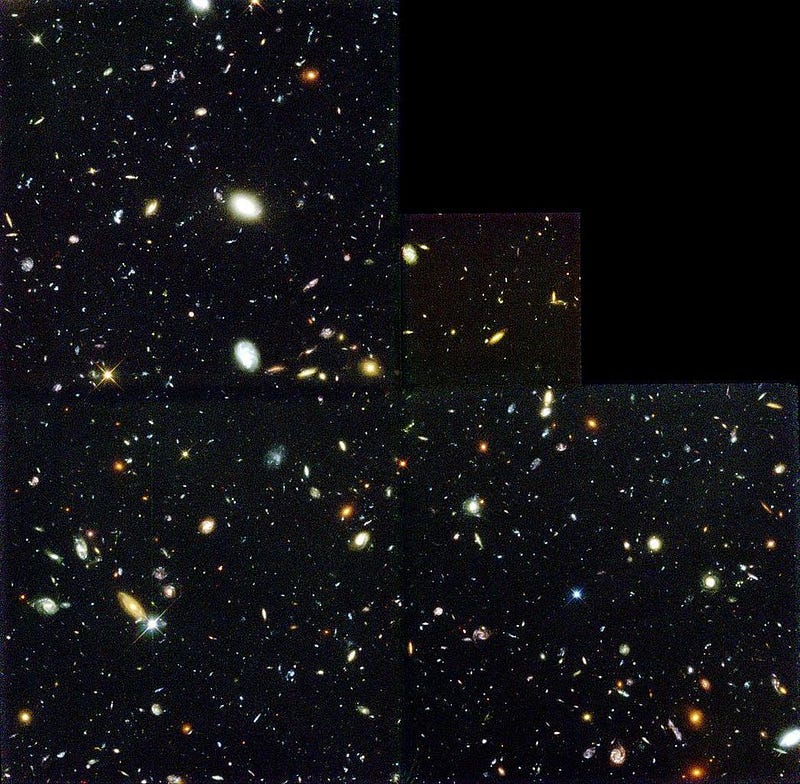
What came back was amazing. Beyond what we could see, there were thousands upon thousand of galaxies out there in the abyss of space, in a tiny region of sky. The Hubble eXtreme Deep Field, the modern successor of the original deep field, found 5,500 galaxies in a region taking up just 1/32,000,000th of the sky. When you add in what we know about galaxy formation and the expected population of small galaxies too faint and/or distant to be seen even with modern Hubble data, we’ve learned that there are a total of approximately 2 trillion galaxies within the observable Universe. Hubble, also, has found the most distant one of all.
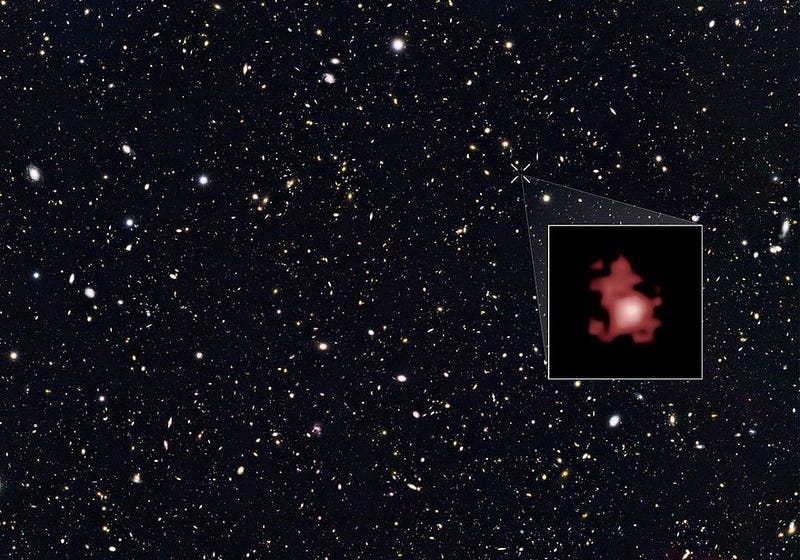
All of this is just a sampling of what Hubble’s discovered. You can add to the list the most pristine populations of stars and gas ever discovered, the oldest known stars in the Universe, the farthest individually resolved stars, the most distant supernovae ever found, and much, much more. Hubble’s imagery of Andromeda has allowed us to catalog more stars outside of our own galaxy than every other survey combined. Some of the best observational evidence for dark matter and dark energy comes courtesy of Hubble data. And when we look at galaxy clusters with Hubble, we’ve discovered more details with gravitational lensing, including the most distant background galaxies of all, than would ever be possible without it.
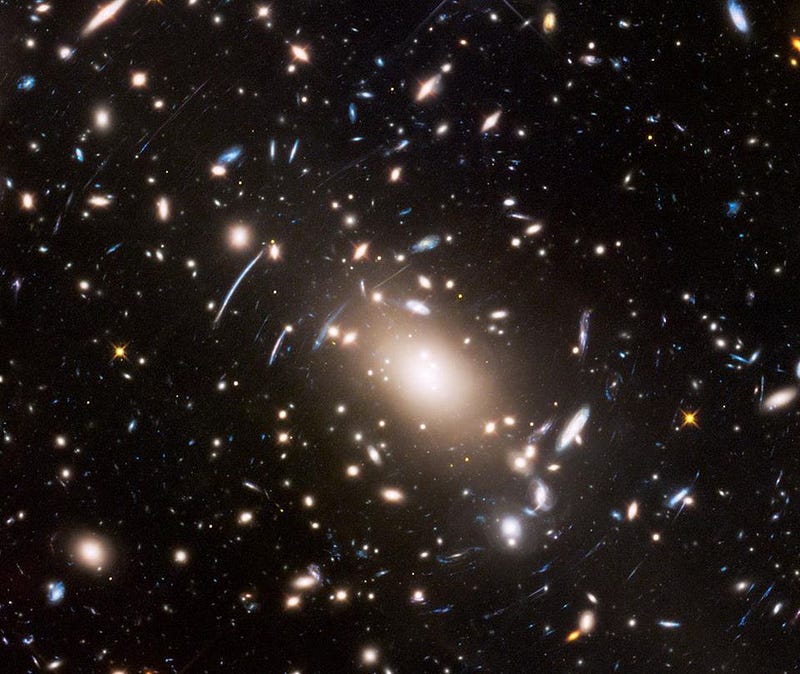
All of this is possible because we planned for Hubble to go beyond its primary mission. We built it to last as long as possible, and we serviced it to not just repair a flaw, but to upgrade the instruments, cameras, and equipment on board multiple times. Hubble has already lasted 28 years, and should honestly be good for another decade so long as the operating equipment on board remains in full working order. Its demise may not come for another 10–15 years, until the drag forces from being in low-Earth orbit cause it to fall down and burn up in Earth’s atmosphere. Until that day comes, Hubble may remain humanity’s largest, most ambitious optical observatory beyond Earth. Happy 28th birthday, Hubble, and may you keep showing us secrets of the Universe we’ve never dared to imagine.
Ethan Siegel is the author of Beyond the Galaxy and Treknology. You can pre-order his third book, currently in development: the Encyclopaedia Cosmologica.





